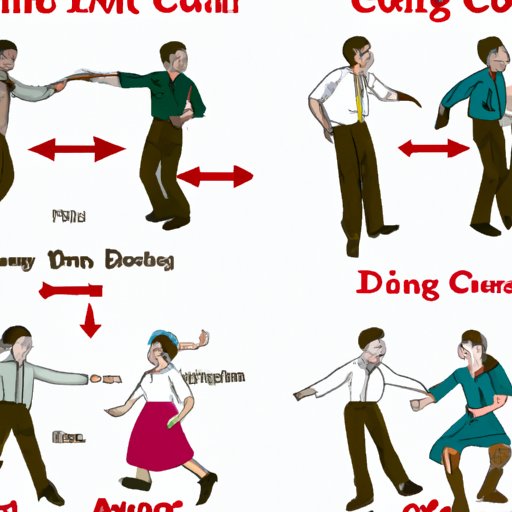Introduction
Contra dancing is a type of folk dance that has been around for centuries. It involves two lines of people facing each other, usually with a live band providing lively music. As the couple progresses up and down the line, they perform a variety of steps and patterns that create an exciting and enjoyable experience. If you’ve ever wanted to try contra dancing, then this beginner’s guide is here to help. Read on to find out more about the history, benefits, and traditions of this popular folk dance.
A Beginner’s Guide to Contra Dancing
Contra dancing is a great way to get some exercise while having fun. Before you start, it’s important to know what to wear and how to prepare. Loose-fitting clothing and flat, comfortable shoes are recommended. You should also stretch before you start to prevent any injuries.
Once you’re ready to go, it’s time to learn the basic step patterns. These can vary depending on the region, but some of the most common include the do-si-do, the allemande, the swing, and the promenade. It’s also important to familiarize yourself with the etiquette and courtesies associated with the dance, such as always giving the partner the proper amount of space and respect.
How to Contra Dance: Tips and Tricks for the Novice
Learning the steps of contra dancing can be a challenge, especially for beginners. But don’t worry—with a little practice and patience, you’ll soon become a pro. Start by focusing on one move at a time and practice it until you’re comfortable with it.
The key to success is staying in sync with the music. Listen closely to the tempo and use the rhythm to help you keep your steps in time. Most importantly, don’t be afraid to make mistakes. Everyone does at first, and it’s all part of the learning process.
Another tip for beginners is to build confidence with practice. Try attending a few classes or workshops before diving into an actual contra dance. This will help you get used to the steps and feel more comfortable when the time comes to take the floor.

The Origins and Traditions of Contra Dancing
Contra dancing has its roots in traditional English country dancing, which was popularized in the 16th century. The dance spread to America in the 18th century, where it eventually evolved into the modern form of contra dancing we know today.
Contra dancing can vary from region to region, with different styles and steps being prevalent in certain areas. Additionally, many dances have their own unique traditions, such as the Virginia Reel, which involves two couples standing back to back and progressing through the moves in opposite directions. Other popular folk dances include the Appalachian Square Dance, the New England Barn Dance, and the Scottish Reel.

Exploring the Benefits of Contra Dancing
Contra dancing provides many physical and social benefits. From improved physical health and fitness to enhanced social skills and self-expression, there are countless advantages to taking part in this timeless art form.
Research has shown that regular participation in contra dancing can reduce stress levels and increase energy levels, leading to better overall health and well-being. Additionally, it can be an excellent way to meet new people and make friends, as well as encouraging self-expression and improving communication skills.
In addition, contra dancing has been linked to numerous psychological benefits, such as increased confidence and a greater sense of belonging. A study conducted by the University of North Carolina found that participants reported feeling “happier, more connected, and more confident” after taking part in a contra dancing event.
Contra Dancing: Music, Movement, and Fun
Contra dancing is a great way to enjoy the beauty of music, movement, and community. Different types of music can be used, ranging from traditional folk tunes to contemporary pop songs. Finding the right partners is also important, as it helps ensure everyone is comfortable and enjoying themselves.
Above all else, the joy of contra dancing lies in celebrating the joy of movement. It’s a chance to embrace the beauty of life and connect with others in a meaningful way. So if you’ve ever wanted to try something new, then why not give contra dancing a go?
Conclusion
Contra dancing is a timeless art form that has been enjoyed by people around the world for centuries. It combines music, movement, and fun, making it a great way to stay active and make new friends. With its origins in traditional English country dancing, contra dancing has evolved into a vibrant art form with its own unique history, traditions, and benefits.
Whether you’re a beginner or an experienced dancer, contra dancing is an enjoyable and rewarding activity. So why not give it a try? With practice and dedication, you’ll soon be spinning and stepping your way to a healthier, happier lifestyle.
(Note: Is this article not meeting your expectations? Do you have knowledge or insights to share? Unlock new opportunities and expand your reach by joining our authors team. Click Registration to join us and share your expertise with our readers.)
